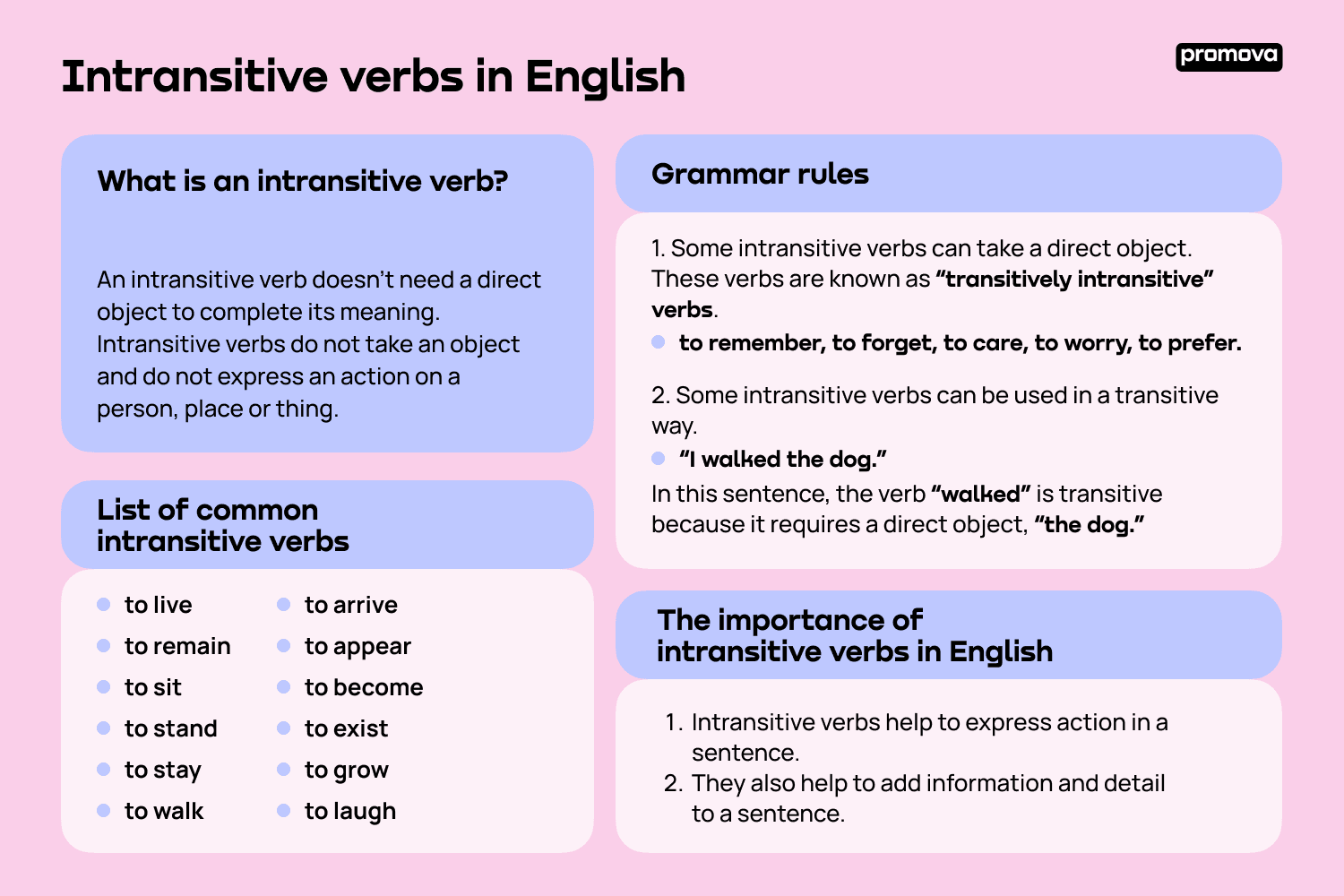Intransitive verbs are action verbs that do not require a direct object to complete their meaning. They typically describe an action that is performed by the subject without affecting anything or anyone else. Intransitive verbs are often used in sentences where the subject is the sole actor of the action.
These verbs can stand alone in a sentence without needing an object to receive the action. Intransitive verbs are an essential part of English grammar, and understanding how they function can help improve your writing and communication skills.
Examples of Intransitive Verbs
1. Run: The dog runs in the park every morning.
2. Sleep: I slept for eight hours last night.
3. Laugh: The children laughed at the funny joke.
4. Arrive: The train arrived at the station on time.
5. Jump: The athlete jumped over the hurdle effortlessly.
Intransitive verbs do not require a direct object to complete their meaning. They can convey a complete thought on their own and do not need anything or anyone else to receive the action. These verbs are often used in sentences where the subject is performing an action without directly affecting anything or anyone else.
It’s important to note that intransitive verbs cannot be followed by a direct object. They only require a subject to perform the action. Intransitive verbs are common in English grammar and can be found in everyday language. By recognizing and using intransitive verbs correctly, you can enhance the clarity and effectiveness of your writing.
When using intransitive verbs, it’s essential to ensure that the subject and the verb agree in number and tense. This will help create grammatically correct sentences that are easy to understand. Intransitive verbs play a crucial role in sentence structure and can help convey actions and ideas concisely.
In conclusion, intransitive verbs are action verbs that do not require a direct object to complete their meaning. They stand alone in a sentence and describe actions performed by the subject. By incorporating intransitive verbs into your writing, you can enhance the clarity and impact of your communication. Practice using intransitive verbs in your sentences to improve your grammar skills and create more effective writing.
